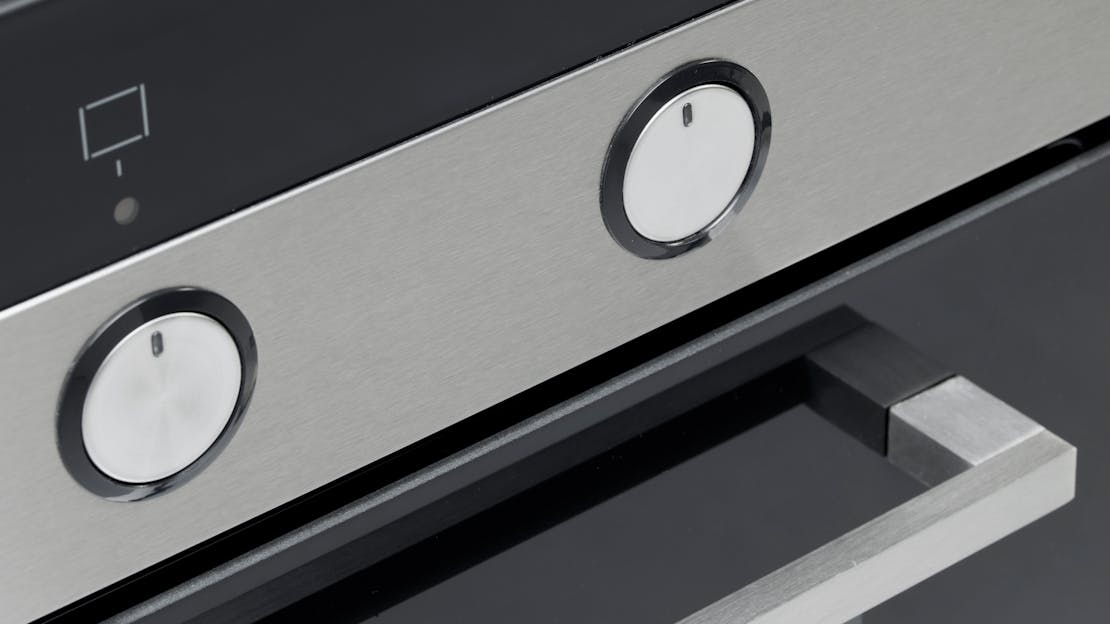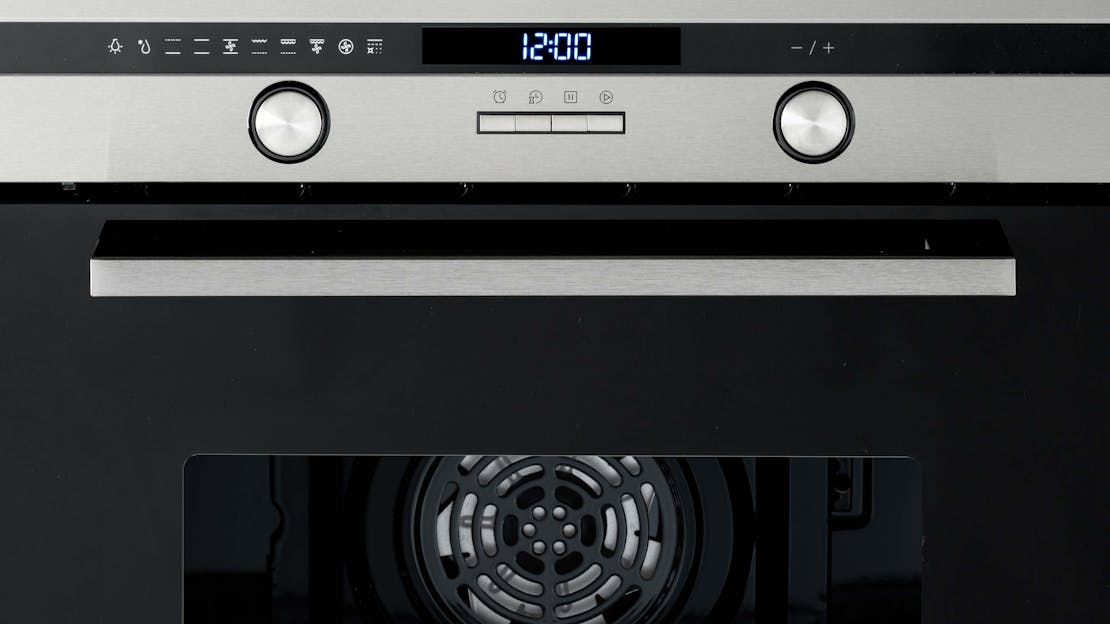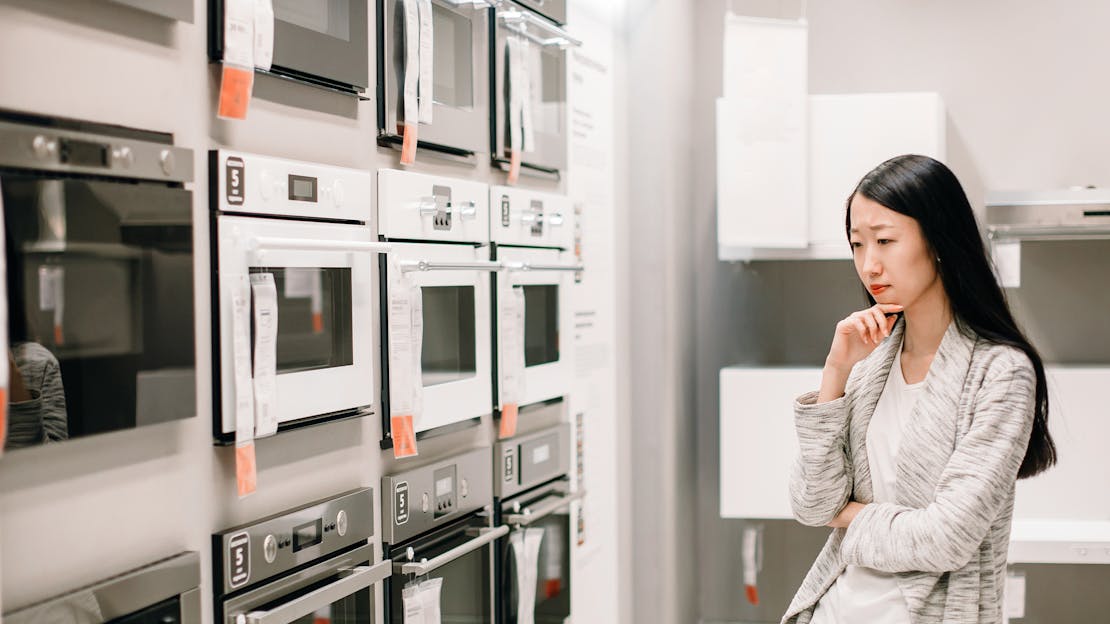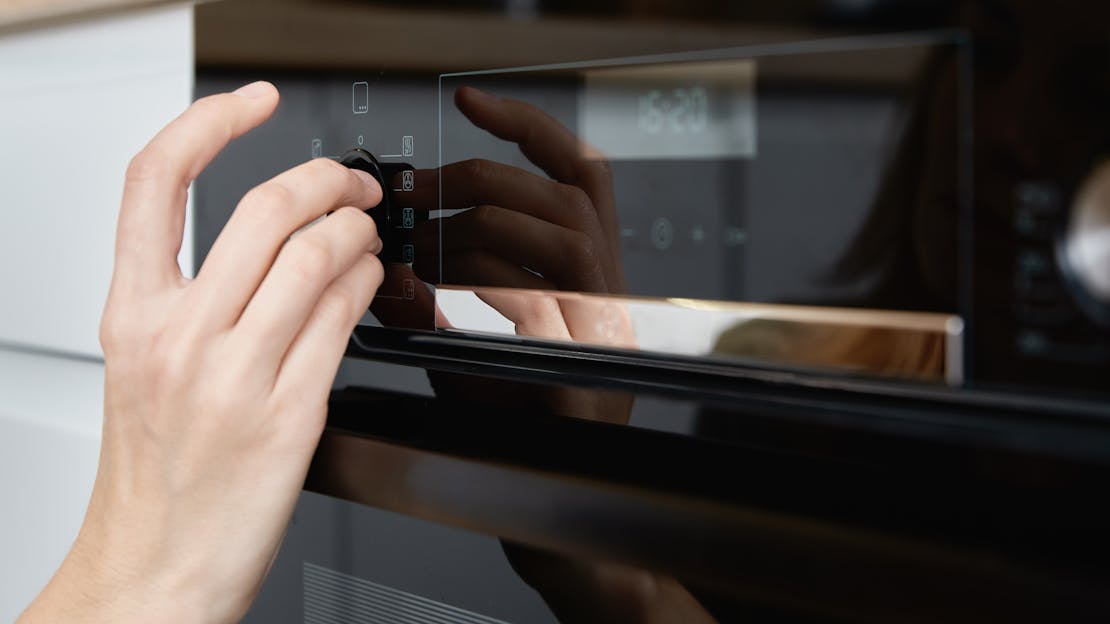
The Ultimate Guide to Oven Functions
In the realm of modern kitchen appliances, the oven has undergone a remarkable transformation. It's no longer merely a vessel for baking and roasting but a versatile powerhouse, offering an array of functions catering to every culinary need. From precision cooking capabilities to safety features, convenience enhancements, and self-cleaning capabilities, ovens have become indispensable tools. In this comprehensive guide we will get to the nitty gritty of oven symbols and controls.
What do my oven symbols mean?
The symbols vary depending on your oven, as oven functions are significantly different between brands and models. However, we will provide a general overview of common oven functions that you will find on many ovens, but keep in mind that the function names and symbols may also vary slightly.
Cooking Function Symbols
An oven cooking function refers to a specific mode or setting on an oven that determines how the oven operates when cooking or baking. Each cooking function is designed to create a particular cooking environment, controlling factors such as temperature, heating elements, and airflow to achieve specific cooking results.
True Fan / Convection Symbol
True fan mode, also known as convectional cooking or fan-forced, utilises a fan to evenly circulate hot air throughout the oven. This results in quicker and more consistent cooking, making it suitable for baking, roasting, and various dishes.
Fan Assisted / Convection Symbol
Fan assisted mode also employs a fan to evenly distribute hot air but may not have the same intensity as True Fan mode. It enhances uniform cooking and browning, making it versatile for different cooking methods.
Conventional / Top and Bottom Heat Symbol
Conventional cooking, or top and bottom heat, activates both the top and bottom heating elements without the fan. It's suitable for traditional baking and roasting and is often used for recipes that require browning on the top or bottom.
Fan and Bottom Heat / Pizza Function Symbol
The pizza function combines the fan for even cooking with bottom heat to create a crispy crust. It's specifically designed for quick and uniform pizza baking.
Grill with Fan Symbol
Grill with fan mode activates the grill element along with the fan. It's ideal for cooking dishes that require browning on top while ensuring even cooking throughout.
Full Grill Symbol
Full grill mode engages the top heating element at full power. It's commonly used for grilling, broiling, and melting cheese or browning casseroles.
Part Grill Symbol
Part grill mode activates the top heating element at a reduced power level. It's useful for gentle grilling and browning when full power isn't required.
Grill with Lower Heat Symbol
This mode combines the grill element with lower heat from the oven's bottom element. It's suitable for grilling thicker cuts of meat while preventing excessive charring.
Bottom Heat / Lower Heat Symbol
Bottom heat or Lower Heat mode uses only the bottom heating element. It's helpful for recipes where you need gentle bottom cooking or maintaining a consistent low temperature.
Bread Proofing Symbol
The bread proofing function creates a warm and controlled environment inside the oven to facilitate the rising of dough. It's essential for bread and pastry making.
Slow Cooking Symbol
Slow cooking mode allows you to cook dishes at a low and consistent temperature over an extended period, similar to a slow cooker. It's perfect for tenderising meats and creating flavourful stews.
Functions for Convenience
An oven function for convenience refers to features and settings on an oven that make cooking and meal preparation more convenient and efficient. These functions are designed to simplify cooking tasks, save time, or enhance the user experience.
Defrost Symbol
The defrost function employs low heat to gently thaw frozen foods without cooking them. It helps speed up the defrosting process while preventing food from becoming partially cooked.
Interior Light Symbol
The Interior Light function simply switches on the oven's interior light, allowing you to monitor the cooking process without opening the oven door and losing heat.
Reheating Symbol
Reheating mode uses a low and gentle heat to reheat leftover dishes. It ensures that the food is heated evenly without drying it out.
Safety Functions
An oven safety function refers to features and mechanisms in an oven designed to ensure the safe operation of the appliance and reduce the risk of accidents or mishaps. These functions are crucial for protecting users, preventing injuries, and avoiding potential hazards associated with using ovens.
Child Lock Symbol
The child lock function is a safety feature that prevents children from accidentally operating the oven. It locks the control panel, keeping the oven settings secure.
Minute Minder Symbol
The minute minder function is a timer that can be set independently of cooking functions. It alerts you when a specific amount of time has passed, useful for timing various cooking tasks.
Alarm Symbol
The alarm function sets off an audible alert when your cooking time has elapsed, ensuring you don't forget about your dish in the oven.
Self Cleaning Functions
Oven self-cleaning functions are features that allow the oven to automatically clean itself by using high temperatures to incinerate food residues and grease, reducing the need for manual cleaning.
Pyrolytic Clean Symbol
Pyrolytic clean is a self-cleaning function that uses extremely high heat to incinerate food residues and grease inside the oven. Afterward, you can easily wipe away the ash.
Steam Clean Symbol
Steam clean is a gentler cleaning function that uses steam to loosen and soften food residues, making it easier to clean the oven's interior without the high temperatures of pyrolytic cleaning.
What is an oven function
Oven functions, often referred to as cooking modes or settings, encompass a range of pre-programmed cooking options designed to cater to various cooking requirements. These functions dictate how the heating elements or fans within the oven operate, allowing users to choose the most appropriate cooking method for a specific dish.
Temperature control
Temperature control in an oven is a crucial feature that allows you to adjust and maintain the desired cooking temperature while preparing various dishes. It plays a fundamental role in achieving consistent and precise cooking results.
When you open the oven door, you can lose a decent amount of the internal heat within the oven. It's crucial to keep this in mind and avoid unnecessary door openings during cooking, as it can significantly extend the cooking time due to the oven needing to work harder to regain its temperature.
A helpful strategy is to initially set the oven temperature slightly higher for preheating purposes. Then, when you place your food inside, adjust the temperature control to your desired level. By doing so, you account for the anticipated heat loss and optimise the cooking process for more efficient and precise results.
What is the best function to use on an oven?
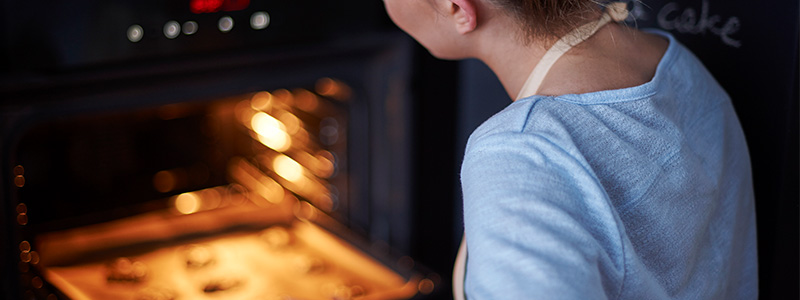
In most cooking situations, the "Fan Assisted" or "True Fan" oven function is often the most suitable choice. This function circulates hot air evenly throughout the oven cavity, providing several advantages:
Even Cooking: The fan ensures that heat is distributed uniformly, resulting in consistent cooking and browning of food.
Faster Cooking: Due to its even heat distribution, convection cooking is typically faster than traditional baking or roasting, which can save time when preparing dishes.
Crispy Texture: Convection cooking helps achieve a crispy exterior texture on food items like roasted meats and baked goods while keeping the inside moist.
Reduced Hot Spots: It minimises the occurrence of hot spots within the oven, reducing the risk of unevenly cooked or burnt areas.
Versatility: The convection function is versatile and suitable for a wide range of dishes, from roasting chicken and vegetables to baking bread and pastries.
However, it's important to note that there are situations where other oven functions may be more appropriate. For instance, when making delicate pastries that require gentle, even heat, the "Conventional" function might be more suitable. Similarly, for quick grilling, the "Grill" function would be used.
Ultimately, the choice of the best oven function depends on the specific recipe and the type of food being prepared. Familiarise yourself with your oven's functions and consult recipes for guidance on which function to use for optimal results.
What is a multifunction oven and what classifies an oven as 'multifunction'
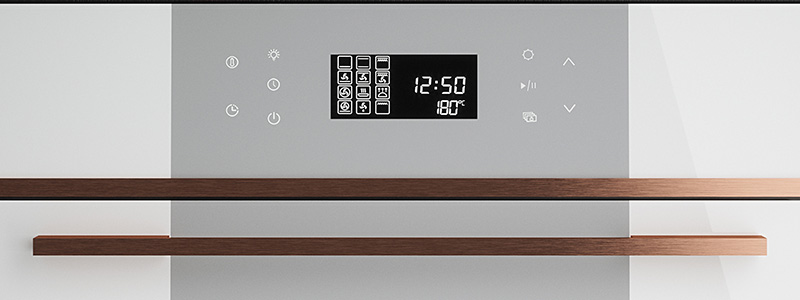
A multifunction oven boasts the versatility of offering two or more cooking modes, enabling you to tailor the heating style to suit your specific culinary needs. These ovens are equipped with multiple heating elements strategically positioned, including an upper element, a lower element, and a coiled element surrounding the fan. In essence, a multifunction oven seamlessly merges the capabilities of a conventional oven with those of a fan oven. This remarkable combination makes it exceptionally well-suited for a wide range of cooking tasks, ensuring succulent meats, flawless baking, and perfectly crispy roasts —all achieved simultaneously!
What oven function should I use for baking
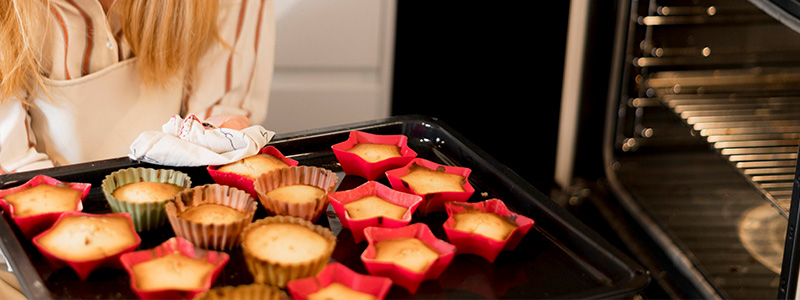
For baking, the recommended oven functions to use are typically "Conventional" or "Fan Assisted." Here's more detail about each:
Conventional: This is the standard function for baking. It activates both the upper and lower heating elements to provide even heat distribution. It's suitable for items like cakes, cookies, brownies, and casseroles.
Fan Assisted: If your oven has a fan-assisted feature, you can use "Fan Assisted." This function utilises a fan to circulate hot air throughout the oven cavity, resulting in even cooking and faster cooking times. Fan-assisted baking is excellent for achieving consistent results with items like cakes and pastries.
The choice between these two functions may depend on the specific recipe and your oven's capabilities. For many baking tasks, the standard "Conventional" function is sufficient. However, if you have a fan-assisted oven or desire quicker and more even results, you can opt for "Fan Assisted." Always consult your recipe or refer to your oven's user manual for specific instructions.
What oven function should I use to cook a chicken
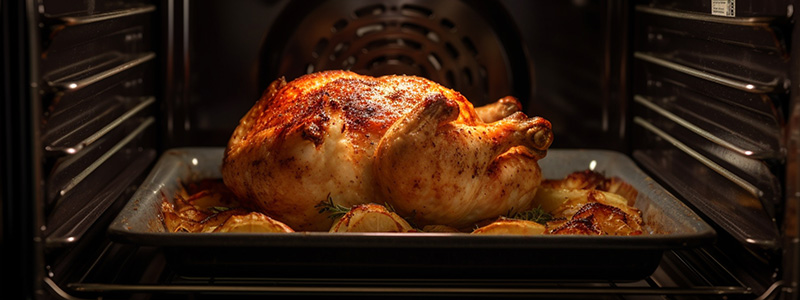
Selecting the appropriate oven function for roasting chicken depends on your specific oven's capabilities and your preferences. If your oven has multiple options, consider experimenting to find the function that works best for your desired result, whether it's a perfectly roasted chicken with crispy skin or a moist and tender interior. Always refer to your oven's user manual for guidance on using its specific functions effectively.
Conventional: The "Conventional" function is the standard setting for most ovens and is commonly used for roasting chicken. It provides top and bottom heating elements that work together to envelop the food with consistent heat. This function is suitable for roasting chicken because it ensures even cooking and browning.
Fan Assisted: If your oven has a "Fan Assisted" function, this is an excellent choice for roasting chicken. Fan-assisted ovens have a fan that circulates hot air evenly throughout the oven cavity. This results in faster and more uniform cooking, making it ideal for roasting meats, including chicken. It also helps achieve a crispier skin.
Grill (Optional): While not typically used for roasting whole chickens, the "Grill" function can be employed briefly at the end of the cooking time to crisp up the chicken skin. Be cautious when using the grill, as it can quickly overcook or burn the chicken if left unattended.
More examples of cooking and which function could be used
| Cooking Scenario | Recommended Oven Function | Why use the Recommended Function |
|---|---|---|
| Baking Bread or Pastries | Conventional (Bake) | Provides consistent top and bottom heat, perfect for even baking of bread, pastries, and other baked goods. |
| Roasting Vegetables | True Fan (Convection) | Ensures vegetables are evenly cooked and browned by distributing hot air throughout the oven. |
| Grilling Steak or Fish | Grill | Quickly sears and caramelises the top of steaks or fish for a crisp exterior while keeping them tender inside. |
| Making Pizza | Fan Assisted (Convection) | Promotes even cooking and crisping of the pizza crust by distributing hot air across the oven. |
| Baking Casseroles or Lasagne | Conventional | Provides consistent heat from both top and bottom elements, ideal for slow, even cooking of casseroles. |
| Roasting a Turkey | Fan Assisted (Convection) | Circulates hot air for even roasting, resulting in a moist interior and a golden-brown exterior for the turkey. |
| Chicken Wings | Grill | Uses intense top-element heat for quick grilling, delivering a crispy texture to chicken wings for a delightful finish. |
| Slow Roasting Pork Shoulder | Conventional (Bake) | Slowly roasts pork shoulder at a low and consistent temperature for tender and succulent results. |
| Making Roasted Potatoes | Fan Assisted (Convection) | Ensures even roasting and a crispy texture for potatoes by circulating hot air throughout the oven. |
| Grilling Salmon Fillets | Grill | Rapidly cooks the top of salmon fillets to a delightful golden-brown while keeping the flesh moist and flaky. |
Please note that the actual names of the oven functions may vary depending on your oven model and manufacturer. Always refer to your oven's user manual for specific guidance on using its functions effectively for different cooking scenarios.
Exploring additional oven symbols: beyond the basics
Having explored the essential oven functions, let's delve into additional symbols commonly found on multifunction ovens.
Double Grill Symbol
The double grill oven function activates both the upper and lower grilling elements simultaneously, ensuring even browning or cooking of food from both the top and bottom, resulting in a consistent and delicious outcome.
Are you looking for a new oven? Check out our range today which includes 5 years guarantee as standard and free delivery.
Top Selling Single Electric Ovens from MyAppliances
Upgrade your kitchen with our range of ovens, including fan, multifunction, and self-cleaning options. From even heat distribution in fan ovens to versatile cooking modes in multifunction ovens and hassle-free maintenance with self cleaning ovens, we have everything to suit your cooking needs. Experience convenience and innovation in your kitchen with our oven solutions.
Oven Buying Guides - Helping you choose the right oven
Oven Buying Guides - Helping you choose the right oven
At the core of every home lies the kitchen, with the oven taking centre stage. This essential appliance is relied upon and used daily, underscoring the significance of selecting the right one. The multitude of options in terms of style, size, and functions can be daunting. To simplify the process, we have created practical guides that will help you determine precisely what to look for. By following these guides, you can confidently choose an oven that caters to your cooking needs and aligns with your lifestyle.
-
Welcome to the comprehensive guide on electric ovens! Whether you're a passionate home cook or someone who simply enjoys preparing delicious meals, this guide is here to provide you with valuable insights into the world of electric ovens.
-
A pyrolytic oven is a self-cleaning appliance that utilises high temperatures to incinerate food residue and grease, eliminating the need for manual scrubbing. During the cleaning cycle, which reaches temperatures as high as 400 to 500 degrees Celsius, the oven locks its door and converts organic matter into ash.
-
If you're after a great value, functional and practical single oven, you've certainly come to the right place. Here at MyAppliances we stock an extensive range.
-
Our double ovens will make light work of all your meals, offering a striking appearance, chunky controls and handy programmers. Want some more information? Simply check out our convenient buyers' guide below for all the details you'll need ahead of purchase.
-
When it comes to buying a new oven, the options can seem overwhelming. With over 20 different types of ovens available, each with unique features and functionalities, it can be difficult to determine which one is right for you.

